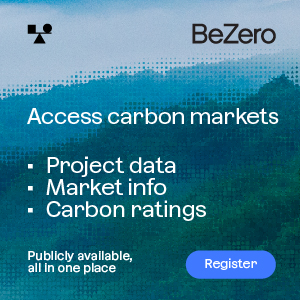The Ontario government on Thursday released draft regulations for its cap-and-trade system, proposing annual emissions cuts of more than 4% but mild penalties for non-compliance and a free ride for industry.
The draft regulations will be out for public consultation over a 45-day period before the rules are finalised, the Ministry of the Environment and Climate Change said.
Ontario will release amendments to the regulation to allow it to connect to the cap-and-trade programmes in California and Quebec once a linking deal has been agreed, the ministry said. Separate offset regulations will also be released later this year.
The draft proposed to cap CO2 emissions for included sectors at 142.332 million tonnes in 2017, when the scheme starts, falling more than 4% per year to 124.668 million tonnes in 2020 – a drop of 12.4% over the period. The annual drop is steeper than the 3.7% rate proposed in November.
In comparison, Quebec ETS emissions are slated to fall 3.2-3.7% annually over the same period, and California’s by 3.1-3.5%.
Ontario’s target is to cut GHG emissions 37% below 1990 levels by 2030 and 80% by 2050.
SOFT PENALTIES
Penalties outlined in the draft were soft compared to other carbon markets.
Emitters eligible for free allowances, primarily manufacturers, that don’t surrender sufficient allowances to cover their emissions would be notified that the government might deduct a corresponding amount of allowances for next year’s allocation.
After 30 days a fine may be imposed where they would be forced to pay a price for each missing allowance equal to the lowest accepted bid price at the most recent auction.
In comparison, EU ETS participants must pay a €100 fine for each missing allowance. In California, companies are fined four times the missing amount in next year’s allocation, while China is planning a fine of 3-5 times above market price plus future deductions for its ETS companies.
Below are some key elements of the Ontario cap-and-trade system.
SCOPE
- The first trading period will run from Jan. 1, 2017 to Dec. 31, 2020. After that, each trading period will go for three years.
- The system will cap CO2 emissions from the power sector (incl. imported electricity and natural gas distribution), industry, and petroleum product suppliers.
- Threshold for mandatory participation is 25,000 tonnes of CO2 per year, but those emitting above 10,000 tonnes can opt in voluntarily.
- The government will issue 142.332 million allowances in 2017; 136.444 million in 2018; 130.556 million in 2019; and 126.668 million in 2020.
- The annual compliance deadline will be Nov. 1, in line with the California market.
- Banking is allowed, but borrowing from future vintages will be restricted to those who have received free allowances as a production adjustment, and even it will be limited to two years into the future.
- Emitters can use offsets to meet up to 8% of their compliance obligation, similar to WCI’s limits.
ALLOCATION
- Manufacturers and electricity generation from biomass will receive all their allowances for free in the first four years, based on four different methodologies: product output benchmark, energy-use based, historical emission levels, and direct allocation based on actual emissions.
- New entrants will not receive any free allowances for the first two years of operation even if they qualify.
- Emitters that qualify for free allowances must apply for them by Sep. 1 of the year before the allowance vintage. The government will issue the allowances by Jan. 15 of the vintage year.
- A maximum of 2 million Early Action Credits in total can be allocated to companies that prove they reduced their emissions between Jan. 1, 2012-Dec. 31, 2015. If total applications for EACs surpass 2 million, they will be distributed to appliers on a pro rata basis.
AUCTIONS & SALES
- Allowances that are not given away for free will be sold.
- 5% of allowances will be set aside for sales to capped emitters only. The remainder will be sold to the market in auctions.
- The minimum price for auctioned allowances will increase each year by 5% plus the annual rise of the Consumer Price Index. A starting price of C$12.82 will be used to calculate the minimum price for the first year.
- The minimum price for sales to capped entities will increase each year using the same formula, but instead of using C$12.82 to calculate 2017 levels, the floor in the first year will be based on the latest Quebec sale of reserve emission units.
- Four auctions and four sales will be held each year.
- Notice will be given at least 60 days before each auction/sale, while results will be published within 45 days after conclusion.
By Stian Reklev – stian@carbon-pulse.com
Not yet signed up to CP Daily? Subscribe to our free newsletter here



